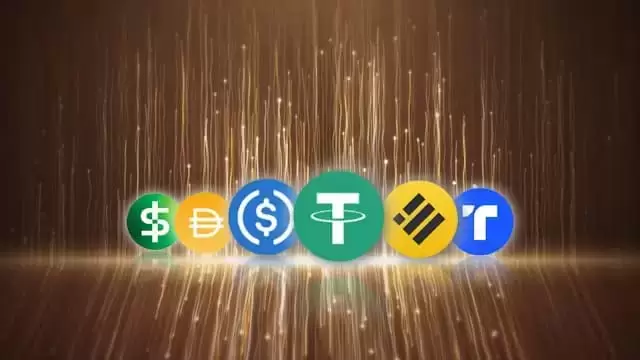 |
|
 |
|
 |
|
 |
|
 |
|
 |
|
 |
|
 |
|
 |
|
 |
|
 |
|
 |
|
 |
|
 |
|
 |
|
分散化された物理インフラストラクチャネットワーク、またはdepinは、実際のインフラストラクチャの構築と運用方法の新しいパラダイムを表しています。

Decentralized Physical Infrastructure Networks, commonly known as DePIN, represent a new paradigm in how we build and operate real-world infrastructure, shifting the focus from large corporations or government entities to community ownership and maintenance.
一般にDepinとして知られている分散型の物理インフラストラクチャネットワークは、現実世界のインフラストラクチャの構築と運営方法の新しいパラダイムを表し、大企業や政府機関からコミュニティの所有権とメンテナンスに焦点を移します。
At its essence, DePIN is about converging physical infrastructure with decentralized networks. It works by enabling individuals to deploy real, physical hardware—such as wireless hotspots, sensors, servers, or other devices—and receive crypto tokens in return for providing useful services to the network. The blockchain acts as the public ledger and coordination layer, recording all contributions and usage of the service, handling token transactions, and enforcing the rules (often through smart contracts) that keep the network running fairly and transparently.
本質的に、Depinは、物理的なインフラストラクチャを分散型ネットワークと収束させることです。ワイヤレスホットスポット、センサー、サーバー、またはその他のデバイスなど、実際の物理的なハードウェアを展開できるようにし、ネットワークに有用なサービスを提供するためにCryptoトークンを受信できるようにすることで機能します。ブロックチェーンは、パブリック元帳および調整層として機能し、サービスのすべての貢献と使用を記録し、トークントランザクションを処理し、ネットワークを公平かつ透過的に実行し続けるルール(多くの場合、スマートコントラクトを通じて)を実施します。
Key components of a DePIN include:
depinの重要なコンポーネントには次のものがあります。
* Community-Run Hardware: Participants (who can be everyday people or small businesses) deploy physical nodes (e.g., antennas, routers, sensors) that provide a service (e.g., network coverage, storage space, sensor data) to users.
*コミュニティが運営するハードウェア:参加者(日常の人や中小企業になる可能性がある)は、ユーザーにサービス(ネットワークカバレッジ、ストレージスペース、センサーデータなど)を提供する物理ノード(アンテナ、ルーター、センサー)を展開します。
* Blockchain Coordination: A blockchain network keeps a tamper-proof record of all service activity and contributions, acting as a neutral manager. It tracks which node provided what service and when. Because the records are public and verifiable, participants can trust the system without a central authority.
*ブロックチェーン調整:ブロックチェーンネットワークは、すべてのサービスアクティビティと貢献の改ざん防止レコードを保持し、中立マネージャーとして機能します。どのノードがどのようなサービスを提供したかを追跡します。記録は公開され、検証可能であるため、参加者は中央当局なしでシステムを信頼できます。
* Token Incentives: The network’s native crypto tokens align everyone’s incentives. Contributors earn tokens as rewards for providing services (like hosting a hotspot or sharing spare computing power), while users of the service might pay in tokens or spend tokens (or associated credits) to access the infrastructure. Tokens can also confer governance rights, letting the community vote on upgrades or policies.
*トークンインセンティブ:ネットワークのネイティブのCryptoトークンは、全員のインセンティブを調整します。貢献者は、サービスを提供するための報酬としてトークンを獲得します(ホットスポットのホストやスペアコンピューティングパワーの共有など)。サービスのユーザーは、トークンで支払い、トークン(または関連クレジット)を使用してインフラストラクチャにアクセスすることができます。トークンは、ガバナンスの権利を付与し、コミュニティにアップグレードやポリシーに投票できるようにすることもできます。
* Decentralized Coordination: Decisions and growth happen from the bottom up. There is no single company controlling the network; instead, open participation means anyone who meets the basic requirements (e.g., buying a device and following the protocol) can join and contribute. This broad participation makes the network more resilient and often more geographically widespread than centrally planned systems.
*分散化された調整:決定と成長は、ボトムアップから発生します。ネットワークを制御する単一の会社はありません。代わりに、オープンな参加とは、基本的な要件を満たしている人(デバイスの購入やプロトコルに従う)を満たしている人なら誰でも参加して貢献できることを意味します。この幅広い参加により、ネットワークはより回復力が高まり、多くの場合、中央計画されたシステムよりも地理的に広く普及します。
In essence, DePIN applies this model of a peer-to-peer economy to infrastructure.
本質的に、Depinはピアツーピア経済のこのモデルをインフラストラクチャに適用します。
For instance, visualize a “people-powered” wireless network. Individuals install wireless hotspots in their homes or offices, and these devices work together to form a crowd-sourced network that provides local coverage for internet and IoT data. The blockchain records each data delivery from a hotspot and automatically rewards the owner with tokens as compensation for providing coverage. The result is a public network built and maintained by its users, as opposed to a network created by a telecom giant.
たとえば、「人を搭載した」ワイヤレスネットワークを視覚化します。個人は家やオフィスにワイヤレスホットスポットをインストールし、これらのデバイスは協力して、インターネットおよびIoTデータのローカルカバレッジを提供するクラウドソーシングネットワークを形成します。ブロックチェーンは、各データ配信をホットスポットから記録し、カバレッジを提供するための補償として、トークンを所有者に自動的に報酬を与えます。その結果、テレコムの巨人によって作成されたネットワークとは対照的に、ユーザーによって構築および維持されているパブリックネットワークが生まれました。
This approach makes infrastructure more accessible, efficient, and resilient. There is no single point of failure, and the network grows where people find it useful.
このアプローチにより、インフラストラクチャはよりアクセスしやすく、効率的で、回復力があります。障害の単一のポイントはありません。ネットワークは、人々がそれが有用であると感じる場所で成長します。
DePIN has the potential to democratize infrastructure in the same way that Bitcoin and DeFi democratized finance, reducing reliance on monopolies or big intermediaries as communities fill service gaps themselves.
Depinは、ビットコインとDefi民主化の財政と同じ方法でインフラを民主化する可能性があり、コミュニティがサービスのギャップを埋めるにつれて、独占や大きな仲介者への依存を減らすことができます。
The contributors who help run the network are rewarded with tokens, which bootstraps growth—the more people join and contribute, the stronger the network becomes, which in turn attracts more users in a virtuous cycle. It also encourages innovation and local solutions—rather than one-size-fits-all infrastructure, different regions or groups can deploy what they need, when they need it, without waiting for corporate investment or government programs.
ネットワークの実行を支援する貢献者は、成長をブートストラップするトークンで報われます。より多くの人々が参加して貢献するほど、ネットワークが強くなり、より多くのユーザーが高潔なサイクルで引き付けます。また、イノベーションとローカルソリューションを奨励しています。これは、1つのサイズのインフラストラクチャではなく、企業投資や政府プログラムを待つことなく、必要なときに、さまざまな地域またはグループが必要なものを展開できます。
In the next sections, we’ll explore how DePIN principles are being applied across various sectors—from telecom and energy to mobility and mapping—with real-world projects leading the way.
次のセクションでは、テレコムやエネルギーからモビリティやマッピングまで、さまざまなセクターにdepin原則がどのように適用されているかを調査します。
1. Telecom and Wireless Networks
1。テレコムおよびワイヤレスネットワーク
One of the most prominent use cases for DePIN is in telecommunications, particularly wireless internet and IoT connectivity. Traditional wireless networks, such as cellular data or WiFi hotspots, are provided by large telecom companies that build towers and infrastructure. DePIN projects are turning this model upside down by crowdsourcing coverage from the ground up.
Depinの最も顕著なユースケースの1つは、電気通信、特にワイヤレスインターネットおよびIoT接続です。セルラーデータやWiFiホットスポットなどの従来のワイヤレスネットワークは、タワーとインフラストラクチャを構築する大規模な通信会社によって提供されています。 Depinプロジェクトは、クラウドソーシングのカバレッジがゼロから逆さまになって、このモデルを逆さまにしています。
Participants can set up small wireless nodes in their homes or businesses, creating a decentralized communication network that anyone nearby can use. By contributing bandwidth and coverage, these participants earn crypto tokens as rewards. This acts as a mini service provider in the broadest sense of the word.
参加者は、家や企業に小さなワイヤレスノードを設定し、近くの人が使用できる分散型通信ネットワークを作成できます。帯域幅とカバレッジに貢献することにより、これらの参加者は報酬として暗号トークンを獲得します。これは、単語の最も広い意味でミニサービスプロバイダーとして機能します。
The blockchain serves as the public ledger and coordinator, recording all contributions and usage fairly and transparently. It also enforces the rules of the network to keep it running smoothly.
ブロックチェーンは、公開台帳およびコーディネーターとして機能し、すべての貢献と使用を公正かつ透過的に記録します。また、ネットワークのルールを実施して、スムーズに実行し続けます。
Helium – The People-Powered Wireless Network
Helium - 人を搭載したワイヤレスネットワーク
A leading example in this space is the Helium Network, which allows individuals to host low-cost wireless hotspots that provide connectivity for Internet of Things (IoT) devices (and more recently, for cellular data as well). In return, hotspot hosts earn Helium’s native cryptocurrency, HNT. This model has led to the rapid growth of a truly people-powered network.
このスペースの主要な例は、ヘリウムネットワークです。これにより、個人は、モノのインターネット(IoT)デバイスに接続性を提供する低コストのワイヤレスホットスポットをホストできます(最近では、セルラーデータも同様に)。その見返りに、ホットスポットホストはヘリウムのネイティブ暗号通貨HNTを獲得します。このモデルは、真に人々を搭載したネットワークの急速な成長をもたらしました。
Helium became the world’s largest decentralized wireless network, with over 375,000 active hotspots deployed by everyday users around the globe. Each hotspot acts like a mini cell tower or WiFi router, and together they form a blanket of coverage for sensors, smart devices, and even phones in some areas.
ヘリウムは世界最大の分散型ワイヤレスネットワークになり、世界中の日常のユーザーが375,000を超えるアクティブなホットスポットが展開されました。各ホットスポットは、ミニセルタワーまたはWiFiルーターのように機能し、一部のエリアでは、センサー、スマートデバイス、さらには携帯電話のカバレッジを組み合わせています。
Helium
ヘリウム
免責事項:info@kdj.com
提供される情報は取引に関するアドバイスではありません。 kdj.com は、この記事で提供される情報に基づいて行われた投資に対して一切の責任を負いません。暗号通貨は変動性が高いため、十分な調査を行った上で慎重に投資することを強くお勧めします。
このウェブサイトで使用されているコンテンツが著作権を侵害していると思われる場合は、直ちに当社 (info@kdj.com) までご連絡ください。速やかに削除させていただきます。
-

-

- Shiba Inu(SHIB)価格分析
- 2025-04-24 04:10:12
- 入力:出力:タイトル:SubBDの分散型クリエータースイートは、デジタルコンテンツの収益化方法を再定義することができます
-

-

-

-

-

-

-




























































